
Tricycle gear is a type of aircraft undercarriage, or landing gear, arranged in a tricycle fashion. The tricycle arrangement has a single nose wheel in the front, and two or more main wheels slightly aft of the center of gravity. Tricycle gear aircraft are the easiest to take-off, land and taxi, and consequently the configuration is the most widely used on aircraft.
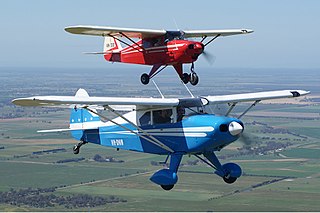
The PA-20 Pacer and PA-22 Tri-Pacer are a family of four-place, strut braced, high-wing light aircraft that were built by Piper Aircraft in the post-World War II period.
The Comp Air 4 is an American light civil utility aircraft manufactured in kit form by Comp Air. Builders are able to choose between an airframe designed for engines in the 140-180 hp (104-134 kW) range, and a heavier one for 250 hp (187 kW) units. The latter airframe can be fitted with up to six seats, while the standard airframe seats four. The Comp Air 4 may be built with tailwheel, tricycle, float, or amphibious float undercarriage.

The Jodel D.11 is a French two-seat monoplane designed and developed by Société Avions Jodel in response to a French government request for a low-wing aircraft for use by the nation's many emerging flying clubs.

The Chrislea Super Ace is a 1940s British four-seat light aircraft built by Chrislea Aircraft Limited.

The Klemm Kl 107 was a two-seat light aircraft developed in Germany in 1940. It was a conventional low-wing cantilever monoplane of wooden construction with fixed tailwheel undercarriage. Wartime production totalled only five prototypes and some 20 production machines before the Klemm factory was destroyed by Allied bombing. Following World War II and the lifting of aviation restrictions on Germany, production recommenced in 1955 with a modernised version, the Kl 107B, of which Klemm built a small series before selling all rights to the design to Bölkow. This firm further revised the design and built it as the Kl 107C before using it as the basis for their own Bo 207.

The Nord 1221 Norélan was a 1940s three-seat training monoplane designed and built in France by Nord Aviation.

The Malmö MFI-10 Vipan was a four-seat light utility monoplane designed and built in Sweden by Malmö Flygindustri. Only three aircraft were built and the type did not enter quantity production.

The Maule M-7 is a family of single-engine light aircraft that has been manufactured in the United States since the mid-1980s.

The Piel CP.70 Beryl is a French twin-seat, single-engine sport aircraft designed by Claude Piel. It was first flown in France in the 1960s and marketed for amateur construction.

The SIPA S.90 was a French-built two-seat light touring and training aircraft of the 1940s and 1950s.
The SNCAC Chardonneret were a short series of 1940s French three- and four-seat cabin monoplanes with the same wings and general layout but with different engines.

The Sud-Ouest Corse was a French mail and passenger transport aircraft, built by SNCASO.

The Praga E-210 was a four-seat, twin-engined touring aircraft built in Czechoslovakia in the late 1930s. It had an unusual pusher configuration. Its tail unit and undercarriage were modified significantly before World War II and after the war a more powerful version designated E-211 was flown.
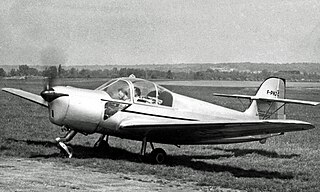
The Morane-Saulnier MS.603 was a French-built two-seat light aircraft of the late 1940s.

The Dyn'Aéro CR.100 is a French kit built single engine, two-seat monoplane, developed in the 1990s and intended as both an aerobatic trainer and a tourer, primarily for aero club use.

The Coupé-Aviation JC-01 is the first of a series of very similar designs of two seat, single engine sports aircraft, amateur built from plans in France from 1976. These provided a range of engine sizes and undercarriage layouts, but total production was small.
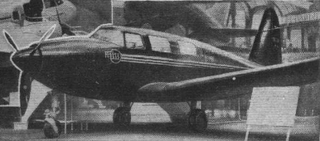
The SNCASO SO.7010 Pégase was a six-passenger light transport aircraft developed in France immediately after World War II. It was powered by a pair of tandem-coupled V-8 engines but this power plant proved to be too troublesome for development to proceed.
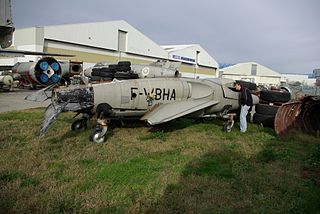
The SNCASO Deltaviex or SNCASO-ONERA Deltaviex was a small French experimental jet aircraft, first flown 30 April 1954 and distinguished by highly swept, small span wings. It was designed to explore the possibility of controlling roll and yaw with fine jets of air bled from the engine's compressor.
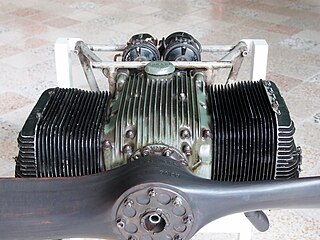
Production of the Minié 4.D series of air-cooled, flat four engines began before World War II and resumed afterwards into the 1950s.


















